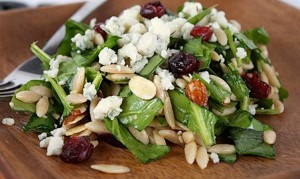Ladies and Gentlemen,
 Recently, I’ve been a touch bored with the conclusion of first season of True Detective, and no NFL save the Manziel Comedy Hour. With Arsenal now out of the Barclays Premiership Race (we can still make it into the Champions League) and the Colorado Rapids off to a good start, there is hope for the summer. In the meantime, rather than watch another Dance Moms with the better half, I became engrossed with Black Sails, a great little show about the quest to plunder a Spanish galleon by a bunch of ne’er do wells. Think an R rated version of Pirates of the Caribbean and you’re on the right path. No Disney nonsense here. Blood, guts, harlots, and bad hygiene…often at the same time.
Recently, I’ve been a touch bored with the conclusion of first season of True Detective, and no NFL save the Manziel Comedy Hour. With Arsenal now out of the Barclays Premiership Race (we can still make it into the Champions League) and the Colorado Rapids off to a good start, there is hope for the summer. In the meantime, rather than watch another Dance Moms with the better half, I became engrossed with Black Sails, a great little show about the quest to plunder a Spanish galleon by a bunch of ne’er do wells. Think an R rated version of Pirates of the Caribbean and you’re on the right path. No Disney nonsense here. Blood, guts, harlots, and bad hygiene…often at the same time.
Aaarrgh. Pirates.
Which takes me to what these maritime bandits threw down their gullets onboard their ships, and on the beaches of Tortuga and Nassau. Rum. Lots and lots of it. This grog that fueled the good and bad guys on the Seven Seas is the stuff of legend, and brought colonies to their molasses-stained knees. I am a fan of rum, and we have history. The first time I got truly plastered (and violently sick) was at the delicate age of 18. Bacardi 151 and Coke in a 32-ounce Big Gulp cup on a Friday night, where I and a coworker (a woman 8 years my senior) party hopped from house to house. It was a first date, and she either felt sorry for me being the rookie, or I said something poignant and life-changing whilst praying to the Porcelain God. We ended up moving in together for a couple of months. Her name was Uneeda.This grog that fueled the good and bad guys on the Seven Seas is the stuff of legend…
I couldn’t make that up if I tried.
 Rum is the evolution of one of the world’s oldest alcoholic beverages. Like wine, sugar cane and beet are products that have fermentable sugars ready at a moment’s notice. The first examples of “sugar wine” date back 6,000 years. However, rum distillation did not occur until the mid-17th century: the rise of the New World, along with an abundant source of material across Latin and South America, made the Caribbean islands the perfect place to set up shop. Rum was used for trade, barter, even as currency. Alcohol also had its dark side, however. The slave industry and many military insurgencies had financial backing fueled by rum production. One of the first written mentions of Barbados Rum refers to it as “Kill-Divil…a hot, hellish, and terrible liquor.”
Rum is the evolution of one of the world’s oldest alcoholic beverages. Like wine, sugar cane and beet are products that have fermentable sugars ready at a moment’s notice. The first examples of “sugar wine” date back 6,000 years. However, rum distillation did not occur until the mid-17th century: the rise of the New World, along with an abundant source of material across Latin and South America, made the Caribbean islands the perfect place to set up shop. Rum was used for trade, barter, even as currency. Alcohol also had its dark side, however. The slave industry and many military insurgencies had financial backing fueled by rum production. One of the first written mentions of Barbados Rum refers to it as “Kill-Divil…a hot, hellish, and terrible liquor.”
Cowboy up.
When the trend came to the American Colonies, it took off. As England struggled with the Gin Craze in the early 1700s, Boston, New York, and Philadelphia came to grips with public consumption. In fact, it is believed that every man, woman, and child in the Colonies consumed an average of 14 liters of rum a year. Distilleries were set up in New England; politicians saw it as a way to build camaraderie (and trust) with their constituents. In fact, George Washington was a major proponent of this marketing plan during his runs for public office.
Looks like it worked.
The Colonies became states, and progress west signaled rum’s fall from grace in this fine land. The Appalachian region began using corn and local grains to produce their spirits; whiskey was readily available—and cheaper. Rum was still a favorite among the Gulf states, fueled by sugar cane plantations in Louisiana and Florida. Times and tastes change, however: the union of the North and South after the Civil War ensured that whiskey was the drink of cowboy and city-slicker alike. Rum was associated with palm trees, thick, lush tropical forests, and sandy beaches. You had to go to Miami or the Keys to find the good stuff.
The Cuba Libre was made to celebrate the liberation of Cuba after the war ended in 1898, and as a battle cry for those who had gleaned courage from a few too many rum and Colas.
 We come to the end of the 19th century, and none more pivotal in our expansion and conservation of the United States was Teddy Roosevelt. Before he became president, he was the leader of the “Rough Riders,” the infamous band of misfits sanctioned by the United States military. A decorated hero of numerous battles, Roosevelt’s involvement in the Spanish-American War is well-documented. However, we attribute the creation of two cocktails, the daiquiri and the Cuba Libre, to both Roosevelt and the foremost chronicler of adventure in the early 20th century: Ernest Hemingway. The story goes that the Cuba Libre was made to celebrate the liberation of Cuba after the war ended in 1898, and as a battle cry for those who had gleaned courage from a few too many rum and Colas. Problem with this story is that Coca-Cola was not introduced to Cuba until 1900. One thing is for sure: the first Cuba Libre was served in Havana.
We come to the end of the 19th century, and none more pivotal in our expansion and conservation of the United States was Teddy Roosevelt. Before he became president, he was the leader of the “Rough Riders,” the infamous band of misfits sanctioned by the United States military. A decorated hero of numerous battles, Roosevelt’s involvement in the Spanish-American War is well-documented. However, we attribute the creation of two cocktails, the daiquiri and the Cuba Libre, to both Roosevelt and the foremost chronicler of adventure in the early 20th century: Ernest Hemingway. The story goes that the Cuba Libre was made to celebrate the liberation of Cuba after the war ended in 1898, and as a battle cry for those who had gleaned courage from a few too many rum and Colas. Problem with this story is that Coca-Cola was not introduced to Cuba until 1900. One thing is for sure: the first Cuba Libre was served in Havana.
As for the daiquiri, this was the reinvention of the old Navy and sailor Grog: a mixture of rum, lime juice, sugar, and water. As ice became available in far-off lands, it replaced water. During the 1920s and 30s, the daiquiri was made famous by Hemingway, who drank it with a touch of grapefruit and Maraschino Liqueur.
I am not sure for Whom The Bell Tolls…but my bells rock when I think of a cocktail like that.
With the advent of the Second World War, it was easier to source rum from Latin America than Scotch or Cognac. Rum cocktails and the Tiki Bars of the 1950s and 1960s made rum fashionable, not simply a tipple for the lowly. Daiquiris became sweet and frozen, Pina Coladas were in vogue. Rum, due to its simplicity, became a mixing spirit only, fueled by white rums and spiced rum. In the last 20 years, this has changed significantly, and for the better. Aged rum and styles hereto rarely seen are widely available, and a well-thought selection in your bar can be enjoyed for a lifetime. Nowadays, all is fair game. Try some of these styles…Aged rum and styles hereto rarely seen are widely available, and a well-thought selection in your bar can be enjoyed for a lifetime.
- White Rum: Clean, pure, with hints of sweet sugar and flowers. Bacardi Superior is by far the leader, but Cruzan and Montayna White (a local Coloradan) are smooth and balanced.
- Spiced Rum: Technically not a “style,” as it is really in the flavored category, this is the most identifiable rum other than white. I have been a fan of Chairman’s Reserve Rum and Sailor Jerry’s Navy Spiced Rum for some time; Captain Morgan is the most widely available, but I was really surprised by Bacardi’s Oakheart.
- Aged Rum: Wonderful style, definitely a “sipping” rum. Takes on a distinct sweetness along with the effects of oak. I prefer Zaya, Pyrat, and Ron Zacapa Centanario (a Guatemalan Rum), but Appleton’s 20 year or Cruzan 9 aren’t too shabby, either.
- Rhum Agricole: A style from the French West Indies made from fermented sugarcane juice instead of molasses, distilled in pot stills rather than columns. More Brandy-like than most rums, this is “thinking man’s” rum: elegant, with a spicy edge. JJ Rhum is a perennial favorite, or, if you can find it, search out Delaz.
- Naval Rum: Depicts the style enjoyed by sailors of the British Navy. In fact, it was ordered that all sailors received a daily ration where they would assemble at 6 to drink their “tot” until July 31, 1970, which was named “Black Tot Day.” Pusser’s Naval Rum reigns king, but, if you have the means (financially and socially), there is a small amount of British Royal Navy Imperial Rum that predates the end of the Royal decree.
- Dark Rum: The richest and most affected by notes of molasses and treacle. The “Dark and Stormy” cocktail is traditionally made with Gosling’s Black Strap Rum and ginger beer (Gosling’s also produces a ginger beer). Gosling’s is used for good reason…it doesn’t suck.
As always, it is good to finish with a quote…and, who better than Hunter S. Thompson, author of many novels including The Rum Diaries to lead us out. Ponder this, as you sip on a good glass of rum:
“A man can live on his balls and his wits for so long…”
Hunter S. Thompson
Cheers,
William
Photo credit: tanzer-art via Compfight cc
Related Posts
« Do You Dare Unlock the Power of Creative Confidence? This is BUFFALO Country, Baby…So Drink Like It! »









